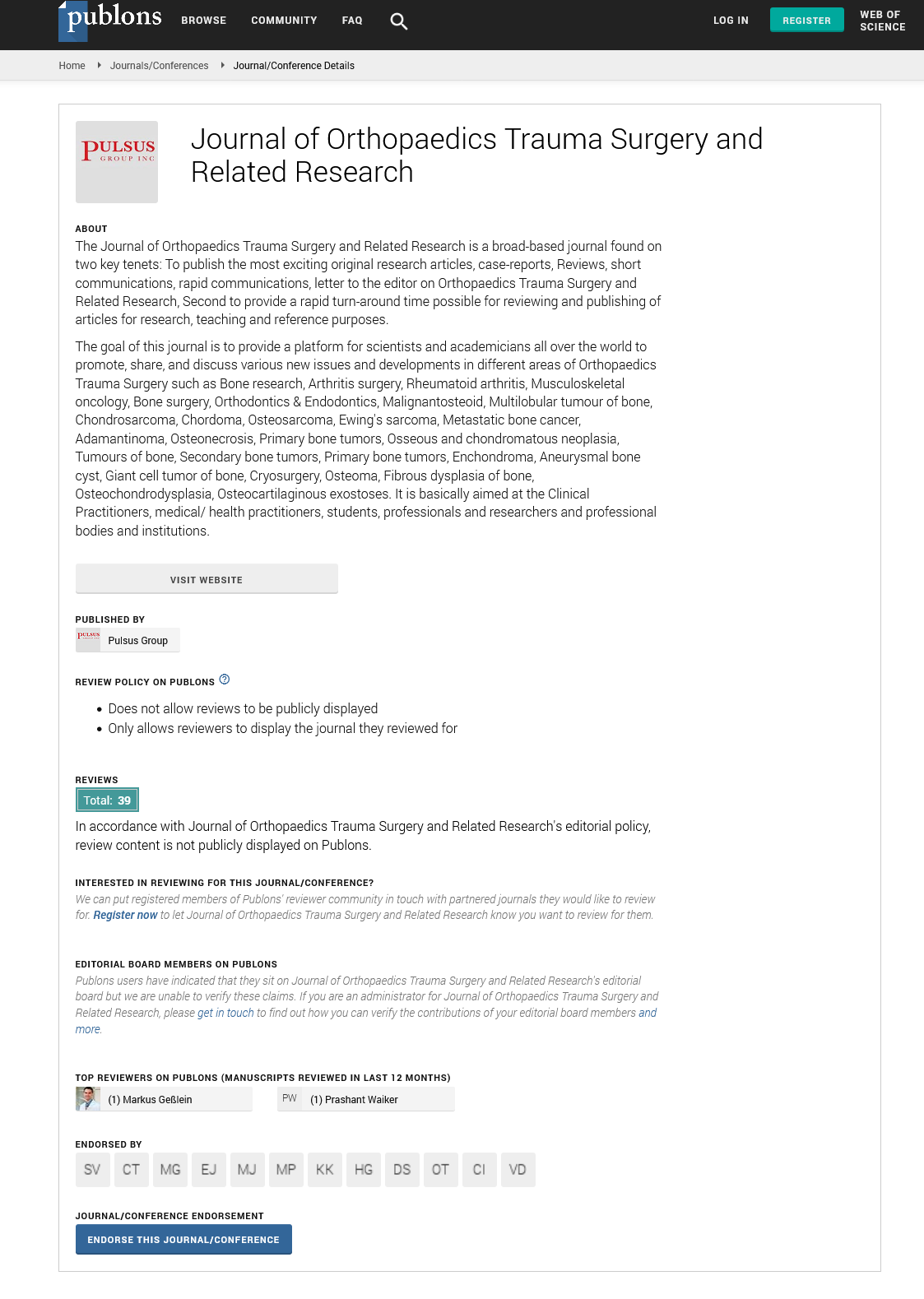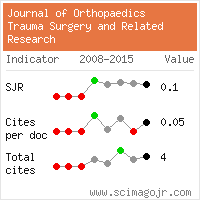An analysis of bone density: Implications measurement techniques
Received: 15-May-2024, Manuscript No. jotsrr-24-139605; Editor assigned: 18-May-2024, Pre QC No. jotsrr-24-139605 (PQ); Accepted Date: Jun 23, 2024 ; Reviewed: 25-May-2024 QC No. jotsrr-24-139605 (Q); Revised: 18-Jun-2024, Manuscript No. jotsrr-24- 139605 (R); Published: 28-Jun-2024
This open-access article is distributed under the terms of the Creative Commons Attribution Non-Commercial License (CC BY-NC) (http://creativecommons.org/licenses/by-nc/4.0/), which permits reuse, distribution and reproduction of the article, provided that the original work is properly cited and the reuse is restricted to noncommercial purposes. For commercial reuse, contact reprints@pulsus.com
Abstract
Bone density, a crucial indicator of skeletal health, plays a significant role in diagnosing and managing conditions such as osteoporosis and fractures. This paper explores various methods for measuring bone density including Quantitative Computed Tomography (QCT). We examine physiological factors such as age, gender, and nutrition, alongside pathological conditions like osteoporosis and endocrine disorders, which impact bone density. Recent advancements in treatment and prevention strategies are highlighted, including pharmacological therapies such as bisphosphonates and denosumab, as well as the role of calcium and vitamin D in maintaining bone health. Innovative approaches, including anabolic agents and gene therapy, offer promising avenues for future osteoporosis management. Through a comprehensive review of current literature and clinical practices, we aim to elucidate the importance of maintaining optimal bone density and the impact of these innovative therapeutic approaches.
Keywords
Bone density; Osteoporosis; Fractures; Bone health; Calcium
Introduction
Bone density, also referred to as Bone Mineral Density (BMD), is a critical measure of bone strength and an essential factor in determining the risk of fractures and osteoporosis. It represents the concentration of minerals, primarily calcium and phosphorus, within the bone matrix, providing an indicator of bone mass and structural integrity. Assessing bone density is pivotal in diagnosing bone-related diseases, guiding treatment decisions, and monitoring the effectiveness of therapeutic interventions. As the population ages, the prevalence of osteoporosis and related fractures has become a significant public health concern, necessitating a deeper understanding of bone density dynamics and the development of effective strategies to enhance bone health. This paper discusses the mechanisms influencing bone density, explores advanced diagnostic techniques, and reviews the latest advancements in treatment options aimed at improving bone density and reducing fracture risk.
Bone density is influenced by a variety of physiological and pathological factors. Age, gender, hormonal levels, nutritional status, and physical activity are among the primary determinants of bone density. For instance, peak bone mass is typically achieved in early adulthood, after which a gradual decline occurs, especially in postmenopausal women due to decreased estrogen levels. Nutritional deficiencies, particularly in calcium and vitamin D, can adversely affect bone density, while regular weight-bearing exercise is known to enhance bone strength. Pathological conditions such as osteoporosis, osteopenia, and certain endocrine disorders like hyperparathyroidism can significantly reduce bone density, increasing the risk of fractures. Osteoporosis is characterized by low bone mass and micro architectural deterioration of bone tissue, leading to enhanced bone fragility and susceptibility to fractures. Understanding these factors is essential for developing targeted interventions to maintain or improve bone density. Several techniques are available for measuring bone density, each with its advantages and limitations. The Dual-Energy X-ray Absorptiometry (DEXA) scan is the gold standard for assessing BMD due to its precision, accuracy, and ability to measure bone density at various skeletal sites. Other methods include Quantitative Computed Tomography (QCT), which provides volumetric BMD measurements and can distinguish between cortical and trabecular bone, and ultrasound densitometry, a radiation-free technique often used for peripheral sites like the heel.
Bone turnover markers, biochemical indicators of bone remodeling activity, can also provide insights into bone density changes, although they are less commonly used for direct measurement. These diagnostic tools are crucial for early detection of bone density abnormalities, allowing for timely intervention and management. Recent years have seen significant advancements in the treatment and prevention of low bone density and osteoporosis. Pharmacological therapies such as bisphosphonates, Selective Estrogen Receptor Modulators (SERMs), parathyroid hormone analogs, and monoclonal antibodies like denosumab have been developed to either slow bone resorption or stimulate bone formation. These medications have shown efficacy in increasing BMD and reducing fracture risk.
Nutritional strategies, particularly adequate intake of calcium and vitamin D, remain fundamental in maintaining bone health. Emerging evidence suggests that other nutrients, such as magnesium, vitamin K, and omega-3 fatty acids, may also play a role in bone metabolism. Additionally, lifestyle modifications, including regular weight-bearing and musclestrengthening exercises, smoking cessation, and limiting alcohol consumption, are critical components of bone health maintenance.
Innovative approaches such as the use of anabolic agents and gene therapy are being explored for their potential to enhance bone formation and improve bone density. Stem cell therapy and tissue engineering also hold promise for regenerating bone tissue and treating severe bone density disorders. These cutting-edge therapies represent the future of osteoporosis treatment, offering hope for more effective management of this condition.
Conclusion
Bone density is a vital aspect of skeletal health,influencing the risk of fractures and the development of osteoporosis. Understanding the factors that affect bone density, utilizing accurate measurement techniques, and implementing effective treatment and prevention strategies are essential for maintaining optimal bone health. Recent advancements in pharmacological treatments and innovative therapies offer promising avenues for improving bone density and reducing the burden of osteoporosis and related fractures. Continued research and clinical efforts are needed to further enhance our understanding of bone density dynamics and develop more effective interventions to promote skeletal health across the lifespan.



 Journal of Orthopaedics Trauma Surgery and Related Research a publication of Polish Society, is a peer-reviewed online journal with quaterly print on demand compilation of issues published.
Journal of Orthopaedics Trauma Surgery and Related Research a publication of Polish Society, is a peer-reviewed online journal with quaterly print on demand compilation of issues published.